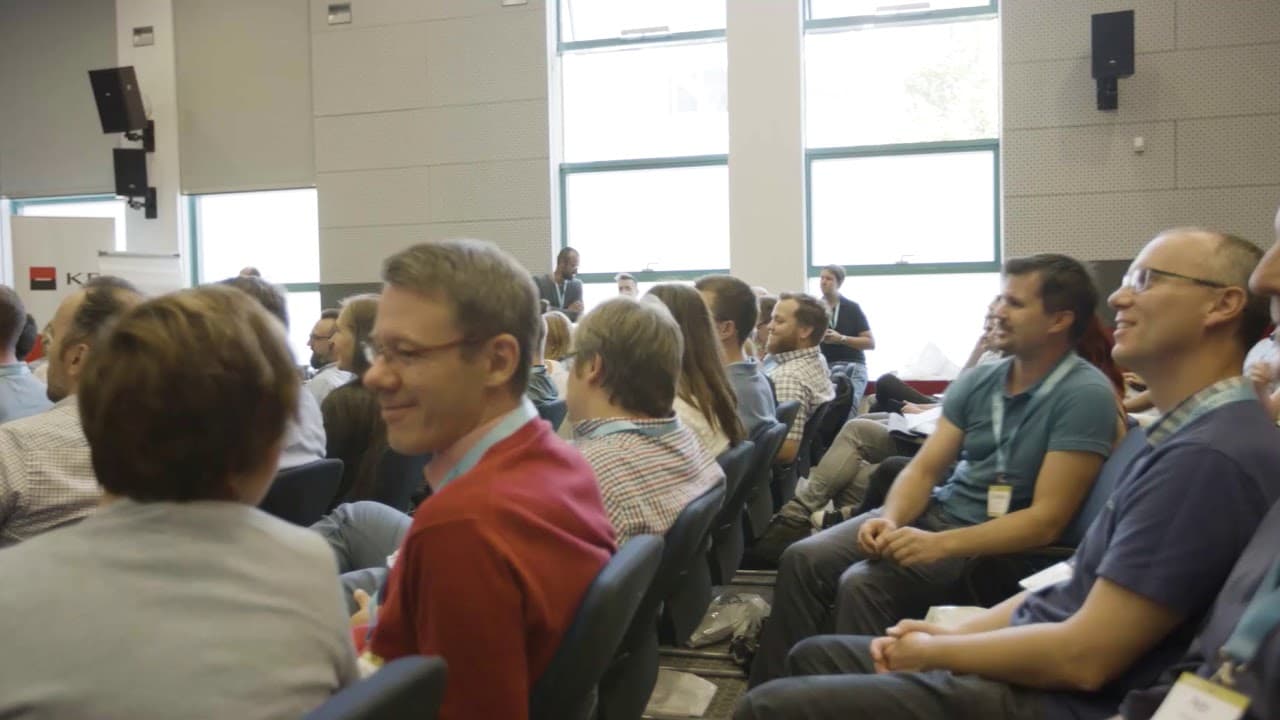So, at this point, I want to talk about questions. I would like to explore the art of asking questions and why they are so precious—how they can have a big impact on our message, especially for leaders of organizations. It's all about questions, and there will be audience participation, so wait for that.
How can I do this? Well, I came up through the ranks, leading global organizations in China and Europe before becoming independent. As I moved up, I got really good at asking this next job, "Please?" But that’s a whole other story.
The Impact of Questions
We're going to focus on how asking questions spreads information throughout an organization and how it makes teams feel safe. The first thing to recognize is that we become numb to questions. We get used to people asking questions that don’t really require an answer. We ask questions as a form of an accent; we ask questions that only require a "yes" or "no" answer.
What we really want to do is move beyond that. As technical leaders, we’re often promoted because of our knowledge. But when we rise up, we need to shift from simply giving knowledge to inspiring others. I certainly had to learn that.
Moving Beyond Knowledge to Teaching
As we rise through the ranks, we learn to keep things moving. We spin plates, keeping everything in the air. But at some point, we can’t keep spinning plates ourselves. We have to help other people learn how to do it.
It’s about growth—personal growth, team growth, and company growth. When we multiply our knowledge, we’re not just teaching; we’re transitioning into asking. First, we teach. But then we must check: "Did you understand?" "Do you know what I just taught?"
Not in a "know-it-all" way, but with curiosity. Because if I ask and I find that someone doesn’t know, I can help fill in the gaps.
Question Power
If I stand in this room and ask, "Where is the best place to go for coffee?" someone local might feel empowered. They know something valuable and can share it. If I narrow it down—"Where's the best vegetarian place?"—that’s still empowering, but maybe fewer people know the answer.
However, if someone doesn't know, they might feel awkward. So, the way we ask questions matters. If I ask, "Where is a good place to get coffee?" and someone replies, "I only moved here two weeks ago," that’s a different kind of conversation. Now I’ve learned something about them, and we can continue the dialogue.
Asking Empowering Questions
Now, let’s try something. I want you to share some questions you use in your work—questions that empower others. Take a minute to think of a question that might help someone on your team feel capable and then ask your partner.
Good Questions Keep People in the Driver’s Seat
If you’ve ever been in a car, but not the driver, and someone asks, "How did you get here?" you might have no idea. You weren’t paying attention to directions—you weren’t engaged.
It’s the same with technical leadership. If you have a difficult problem and your manager says, "Let me show you," and takes over, you stop learning. You’re now a passenger.
Instead, we should ask, "What do you think we should do next?" "What’s your challenge?" "What are your options?" These questions keep people engaged in decision-making.
Avoiding Bad Questioning Habits
However, there are ways to ask questions poorly. One of the worst ways is when a leader asks a question but already has an answer in mind. If they ask, "Should we do A or B?" but only one answer is acceptable, it’s not really a question. It’s a trap.
If you want people to truly think, they need to feel like their response matters. You don’t ask, "Would you like to clean your room?" when you really mean, "Go clean your room."
Investing in Outcomes
When we ask people when they can complete something, they’re more likely to commit to the deadline they give than the one we impose. If I say, "You need to finish this by Friday at 5 PM," they might do it. But if I ask, "When do you think you can have this done?" and they say "Friday at 5 PM," they’re much more invested in meeting that deadline—because they set it.
We saw this in a company that had a strict ticket-closing target. Every Thursday, people would rush to close tickets to meet the weekly goal. Instead, we changed the focus: "Let’s see how much we can complete without worrying about a number." The difference was profound—work was more efficient, and team spirit improved.
Types of Powerful Questions
My colleague Deborah put together an amazing list of questions, and we’ll share it as a PDF for the organization. Some of my favorites include:
- "What’s the first step?" – A great question when someone says, "I don’t know."
- "What are we missing?" – A question that challenges assumptions.
- "What’s the biggest risk in this idea?" – Encourages feedback in a safe way.
As leaders, people challenge us less as we move up. Especially as technical leaders, we were promoted for our knowledge. But if we want our teams to be engaged, we need to make it safe for them to challenge us.
Psychological Safety and Effective Questioning
Google’s research on high-performing teams showed that psychological safety—feeling safe to speak up—is crucial. If I present an idea and say, "What do you think?" people might hesitate. But if I ask, "What challenges do you see with this idea?" I’m inviting real conversation.
We also need to avoid "interrogation questions." The tone matters. "What’s next for you?" can be said as curiosity or as an order. The way we ask makes all the difference.
The Key to Asking Questions
To ask good questions, we must listen. But listening is hard. We process words faster than people speak, so our brains start running ahead. While someone is talking, we’re already forming responses.
Like meditation, when you get distracted, bring yourself back. When someone is talking, your mind will wander—acknowledge it and refocus.
When Not to Ask Questions
There are times when it’s better to be direct. If someone is overwhelmed, embarrassed, or struggling, they may not be in a place to process a question. In these cases, offer support, not interrogation.
And never ask a question where there is only one right answer—that’s manipulation. We’ve all been there as kids: "Would you like to clean your room?" No? "Well, too bad, go clean your room." It’s not a real question.
Final Thoughts
So, what’s next for you? How will you apply better questioning in your journey?



